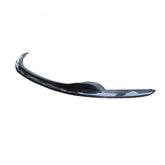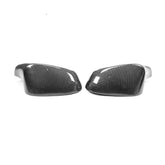The Evolution of the WRX: How Subaru's Star Has Changed Over the Years
Introduction
The Subaru WRX, a car synonymous with performance and rally pedigree, has undergone significant changes since its inception. Originally introduced in the early 1990s, the WRX (World Rally eXperimental) quickly became a favorite among car enthusiasts for its turbocharged power and all-wheel drive capabilities. This article explores the evolution of the WRX, highlighting key developments through the decades.

1. The Early Years: 1992-2000
Debut and Initial Design
- The Subaru WRX debuted in Japan in 1992. It was based on the Impreza chassis, which was compact and robust—ideal for the rigors of rally racing.
- The early models featured a turbocharged 2.0-liter flat-four engine, producing significant power for the car's size.
Performance and Reception
- The WRX quickly gained a reputation for its road-gripping all-wheel drive and a power-to-weight ratio that embarrassed more traditional sports cars.
- By the late 1990s, the WRX was a dominant force in the World Rally Championship, enhancing its status among performance enthusiasts.
2. New Millennium Updates: 2001-2007
Design Overhaul
- The early 2000s saw a more aggressive redesign of the WRX. The most notable change was the introduction of the "bugeye" headlamps in 2001, which polarized enthusiasts but pushed the brand into a more distinctive era.
- Subaru continued to refine the body, with subsequent models sporting "blobeye" (2003-2005) and "hawkeye" (2006-2007) headlamps.
Technological Advances
- These years marked significant improvements in power output and handling. The STI version, introduced to the U.S. in 2004, featured a 2.5-liter turbocharged engine and more advanced driver-assist technologies.
3. Refined Performance: 2008-2014
Aesthetic and Structural Changes
- The third generation introduced in 2008 brought a more mature look with a larger body and more refined interiors, aiming to appeal to a broader market while improving comfort and safety.
- Despite some enthusiasts criticizing the move away from its raw, rally car roots, these models benefited from improved material quality and more sophisticated engineering.
Enhanced Capabilities
- Engine enhancements continued, with the WRX using a 265 horsepower engine in 2009, and the STI models maintaining the 2.5-liter engine but with tweaks for better reliability and performance.
4. Modern Era: 2015-Present
Return to Roots
- In 2015, Subaru introduced a new generation of WRX and WRX STI. These models featured a return to more angular, aggressive styling, reminiscent of earlier models but with modern technology and comfort.
- The WRX now featured a new 2.0-liter direct-injection turbocharged engine, while the STI continued with the tried and tested 2.5-liter engine.
Technological Integration
- Modern WRX and STI models include state-of-the-art technology for safety and connectivity, including Subaru's EyeSight Driver Assist Technology and multimedia systems with smartphone integration.
- Despite advancements and a slight shift towards more everyday usability, these models retain the performance ethos that has defined the WRX line.
Conclusion
The evolution of the Subaru WRX reflects a blend of rally-bred performance with modern technological advances and design refinements. From its raw, powerful beginnings to its current sophisticated but sporty iteration, the WRX remains a symbol of speed, stability, and excitement. Its legacy continues to evolve, combining practicality with the thrill of high performance, ensuring that the WRX remains a favorite among car enthusiasts around the world.











